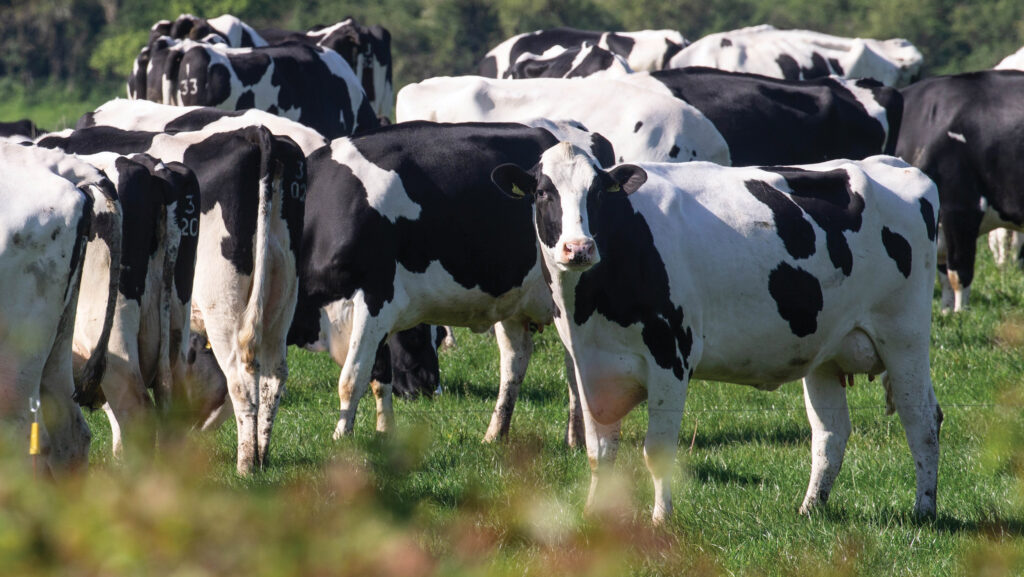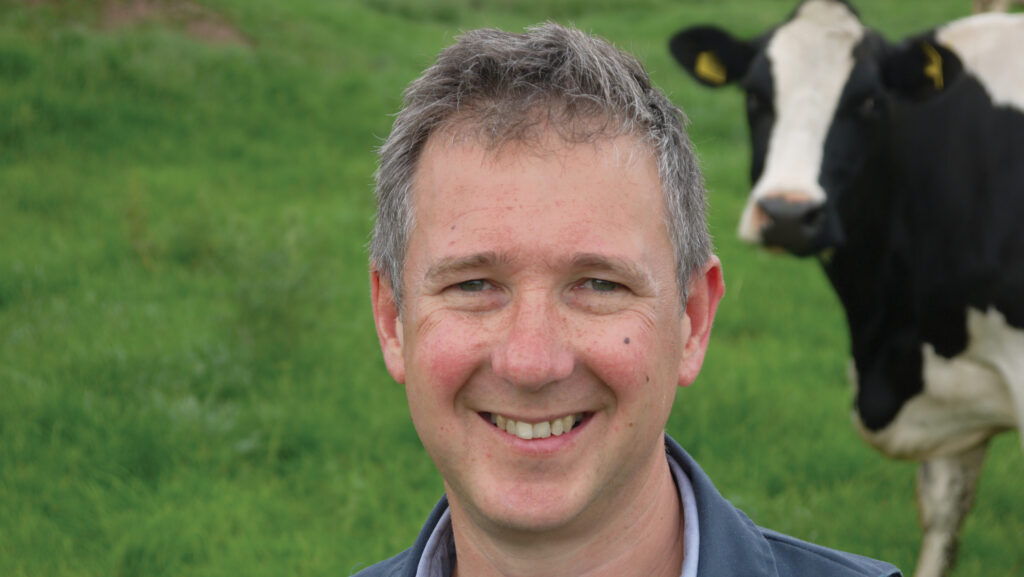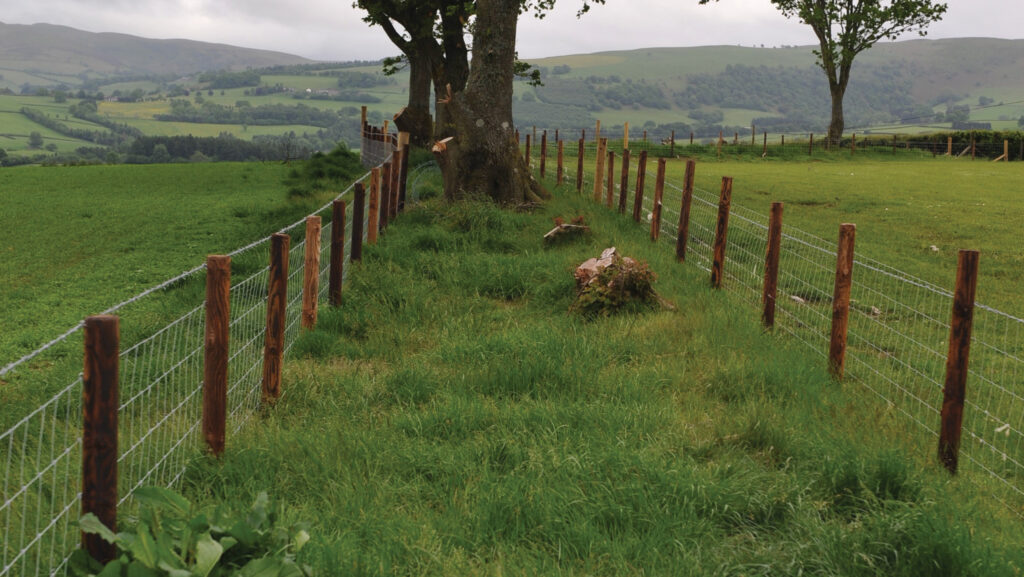5 ways to improve biosecurity on dairy farms
 © Tim Scrivener
© Tim Scrivener As dairy herds get bigger, so can disease challenges.
But instead of accepting higher infection levels as an inevitable consequence of expansion, farmers can minimise risk or remove it completely by applying key biosecurity principles.
Bovine veterinary specialist Owen Atkinson acknowledges that biosecurity is not a subject that excites farmers, unlike milk yield, cow fertility and age at first calving, which all have potential to increase profitability.
But disease has a major influence on all three of those KPIs.
See also: Advice on BVD vaccination for autumn block-calvers
The economic consequences of not isolating and testing purchased stock, not double fencing field perimeters, failing to vaccinate, having poor biosecurity, and not implementing other known biosecurity wins can be significant, Owen points out.
Therefore, biosecurity makes financial, as well as animal welfare, sense, he says: “Most biosecurity measures give good returns on investment, though the risks of poor biosecurity are farm dependent.”
He suggests there are five easy wins every dairy farm can aim for to prevent routes of infection onto a farm (bioexlusion), and to control infection if it gets in (biocontainment).

© Owen Atkinson
1. Run a closed herd where possible
Many farmers mistakenly believe they are at little risk of importing diseases if purchases are limited to buying a bull every couple of years.
However, research has shown that a single animal movement can link several farms, while eight or more potentially connect every farm in the UK.
“The risk [when] buying in one or just a few animals is a lot higher than farmers believe,” says Owen.
“There is no such thing as a partially closed herd – though herds that have limited numbers of bought-in or hired animals are clearly at lower risk than those with higher numbers that come from multiple sources.”
He recognises that maintaining a closed herd is not easily achieved in practice, as farmers may need to replace TB reactors or scale up numbers to meet herd expansion targets. “A truly closed dairy herd is not very common,” he says.
Checking the disease status of incoming cattle, therefore, becomes the bioexclusion priority, and Owen advises only sourcing stock from a farm with a known disease status.
He suggests the beef sector is ahead of dairy on this, possibly because of bigger numbers of beef breeding stock and the economic advantage of having disease-free accreditation. Some bull sales will only permit stock with Cattle Health Certification Standards (Checs) accreditation.
He recommends avoiding high-risk animals such as hire bulls.
“There might only be a couple of dozen bull hire services in the country, but the very nature of the service means these animals will be linked to a huge number of farms,” he says.
2. Isolate cattle on arrival and test for diseases
Thirty days is largely accepted as the necessary isolation period, allowing time for two blood tests to be taken and their results returned.
Owen advises consulting with the farm vet on which diseases to test for, but says bovine viral diarrhoea (BVD), Johne’s and TB are among the most obvious.
He cautions that a negative test does not guarantee freedom from infection – Johne’s carriers, for example, test negative until shortly before they start shedding, and that can be some time after their arrival on a farm.
Although there can be management challenges associated with isolating animals, he says they are a “small inconvenience”.
“Farmers that don’t isolate leave themselves wide open to incursion,” he insists.
3. Vaccinate
Vaccinating cattle is often described as a form of insurance that farmers take out against disease.
Owen says many farmers underestimate the diseases already present in a herd and the risk those pose to naïve incoming stock.
“If I were a dairy farmer, until I was free of leptospirosis, IBR [infectious bovine rhinotracheitis] and BVD, I would, without hesitation, vaccinate against these endemic diseases,” he says.
“The price of that protection is about £10 per adult animal a year, which is surely a price worth paying when all the science shows the big economic losses associated with any one of these.
“And I’d probably still vaccinate even if I were free, because the risk of these diseases coming into my herd would always be there.”
He points to the approach of pig and poultry farmers, who accept vaccination as standard practice.
Another appeal of vaccination is that diseases can be causing negative but not obvious effects. BVD is a classic example of this.
“The main effect that BVD virus has on a herd is immunosuppression, so calf pneumonia or a spike in digital dermatitis cases might both have a grumbling, uncontrolled BVD problem at the root,” he says.
Owen advises considering every disease individually, assessing the economic and welfare consequences of having it in the herd, and to vaccinate accordingly.
However, while vaccination can help control an endemic disease, by itself it rarely gets rid of it.
4. Identify and address weakness in the system
Farmers operating a closed herd, especially those in regions with high densities of cattle, should consider double fencing to prevent disease transmission.
Many diseases, including IBR, BVD, leptospirosis, salmonella and bovine TB, can all be spread via cattle nose-to-nose contact.
For double fencing (two fences set 3m apart) to be effective, it must wrap itself around the entire perimeter of a farm – although some will have part-secure boundaries, for instance, where there is a river.

Double fence for biosecurity © Debbie James
Owen recommends reviewing other potential weaknesses in biosecurity. “A farmer might have double fencing and think they have good disease control, but they then send their youngstock away to grass or for rearing. That is a weak link.
“Farmers need to be confident there is little likelihood of an animal from a neighbouring farm escaping onto that land or, if they are housed, that they are not sharing their air space with other animals,” he says.
5. Make good use of the farm vet
Every disease has its own nuances, and no farmer is likely to understand the intricacies of each. This is where the farm vet has an important role to play, suggests Owen. “Diagnosis is well in the realm of vets,” he says.
While most farmers are likely to know if they have digital dermatitis in the herd by recognising the distinctive hoof lesions associated with the disease, IBR, for example, can present in different ways.
“For some herds, it might be abortions, but in others it could be mild symptoms like a runny nose, coughing [or] those niggling issues like a high temperature,” he says.
“Disease is complicated and very farm specific; that’s what a vet’s years of training are for, to diagnose these and support farmers with prevention, control and eradication.”
Funding provided by some government health schemes can be used to help with diagnosis.
These include the Animal Health and Welfare Pathway in England, and the Animal Health Improvement Cycle [PDF] in Wales.
